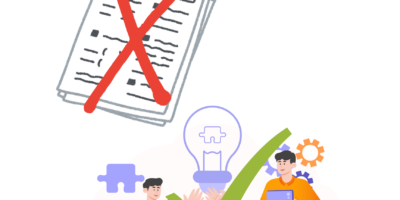More and more often, software companies are switching to subscription-based software packages. There are a number of reasons for this: a subscription pricing model gives the developer a continuous steady income—as opposed to a less stable windfall every few years when they release their new software—and the company doesn’t need to worry about supporting older versions because everyone is pushed the most up-to-date copy of the software. As well, the increasing popularity of internet-on-the-go and using lightweight phones and tablets for productive work is allowing developers to offer so-called “cloud subscriptions.” With these cloud subscriptions, you pay not for the monthly right to download and use the software, but the right to access and manipulate an instance of the software running on an external computer.
While this all seems very interesting and useful, the truth is that, for many, the model of subscription-licensing is not superior to the old model of perpetual licensing, and might result in a less-desirable product. This is very unfortunate given the continuing trend in the industry of migrating away from perpetual licences to an exclusively subscription-based model. Subscriptions result in a higher software cost for most customers. The revenue model will not, as is suggested, improve products by putting pressure on developers to maintain customer satisfaction. And, at the end of the day, unlike with perpetual licensing, the subscription does not give you ownership of your software.
The first and probably most important metric to judge different pricing models by are their cost. Companies that have switched to subscription products claim that these products cost the consumer less than buying it up front; the subscription is a modest monthly payment, and you’ll always be up-to-date with the latest software. The perpetual licence, they say, costs more because you initially pay a larger lump sum (more than the aggregate cost of a two-year subscription), and then the software you have is out of date. However, the older version of the software isn’t truly out of date; most versions of popular software are only incrementally better than their predecessor, to the point where the “betterness” is not even a given.
As said by IDG Connect, “[after] usually three to four years, the subscription costs to enterprises actually begin to exceed those associated with the perpetual model…” assuming one does not purchase every new edition. And very few people need the new edition. A book publisher should probably have the newest version of Word so they can access every manuscript sent to them stably. But the writer sending them a manuscript could be using a much older version, since the publisher should have backwards compatibility. Even some industries that need a particular software do not need the latest version. Adobe, for instance, is in the process of switching its software to an exclusive subscription model. Some of their software packages, like InDesign and Photoshop, are well-recognized professional programs. But unless you really need one of the features introduced in the most recent update, chances are that the product that was being made last year with the previous edition of the software will still be perfectly acceptable using the same, supposedly “obsolete” software next year.
One argument which has been made for how subscription-based software will benefit most consumers is that it will put pressure on developers to maintain and continue developing superior products. The logic is that since customers are paying by the month or the year, they can switch to an alternate service if they are not happy with the one they are using. This is a good thing for customers using a product for which there are alternatives. Unfortunately, many popular software and software suites do not have very legitimate alternatives. The most obvious of these cases is AutoCAD. In late 2013, Forbes reports that AutoCAD had an 85% market share of its category, which it attributed to its massive price advantage over its competitors. That level of market dominance leaves AutoCAD as the industry standard, meaning that even though leaving AutoDesk may be a financially viable option in a subscription model, it will still be very disadvantageous from a compatibility standpoint. Even in markets where there is not a single dominant player, the difficulty in adopting an unfamiliar program and integrating it into the existing workflow will be so high that even a sub-par product will be able to maintain its customers in a subscription-based marketplace.
The final downside for many people in the ongoing subscription revolution is that when the subscription runs out, the asset is lost. Old copies of software retain some value even after a newer version is purchased. The old copy can be stuck on an old laptop which still has occasional use. It could be put on an outdated computer and given to a technology-illiterate relative or friend. If nothing else, it might be sold to someone else who had a similar purpose for it. Was the cost of this asset very much? Probably not. But under the subscription-based model, the options are to forgo having that software on the old hardware, or pay a comparatively exorbitant price every month to have it on there. The perpetual licence may cost more up front, but in the long term it is both cheaper and it leaves you with an asset which will remain useful for years.
There are a few cases where subscription-based software will be useful, specifically for those who absolutely need to have the latest versions. For everyone else, the transition will result in no substantial improvement to their experience, despite paying a higher price. While it is not a cataclysmic problem, the decreasing number of companies that are offering perpetual licences is unfortunate, as it removes a product model which was more ideally suited for large numbers of the products’ users than the one that is replacing it.




Leave a Reply